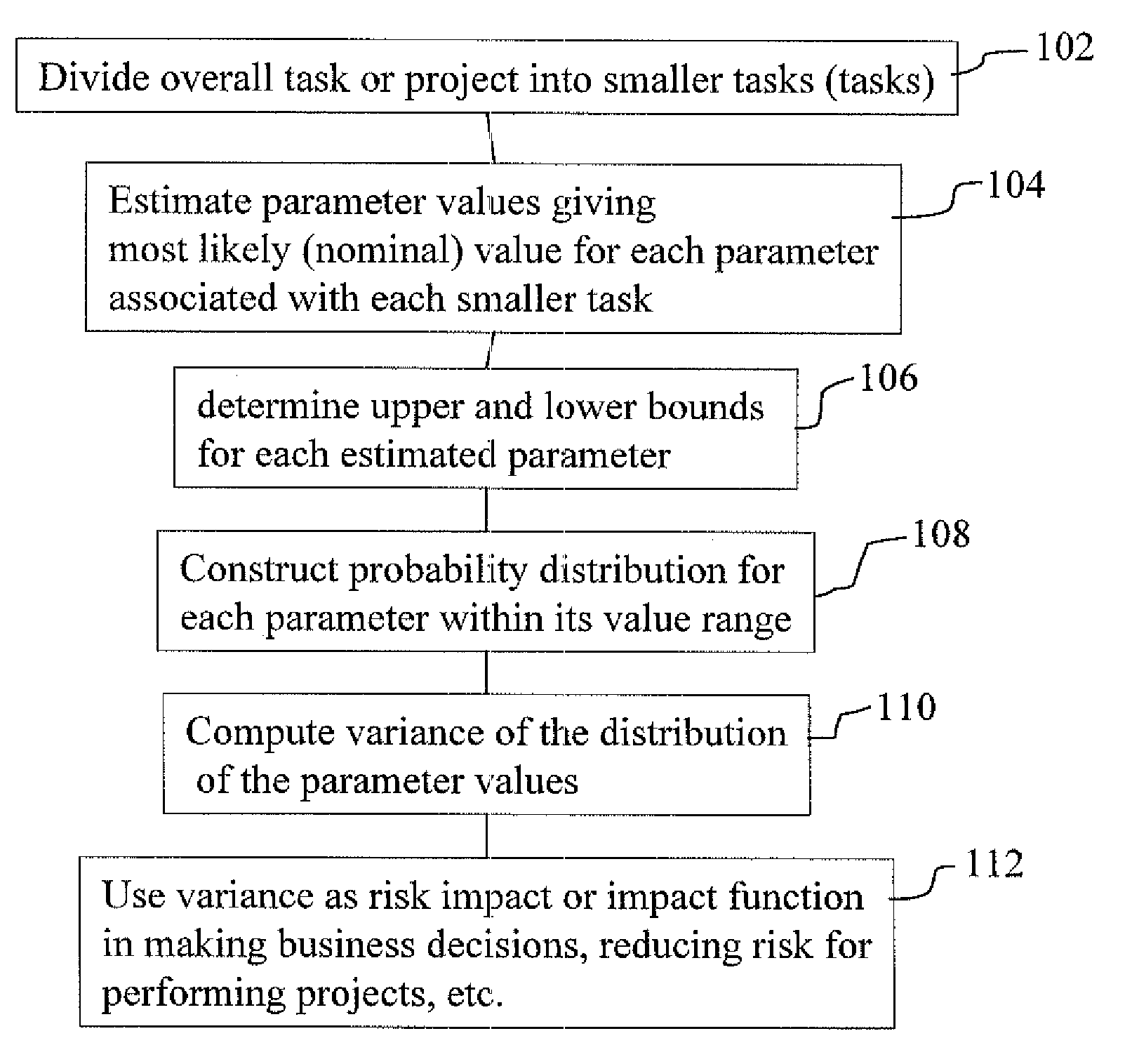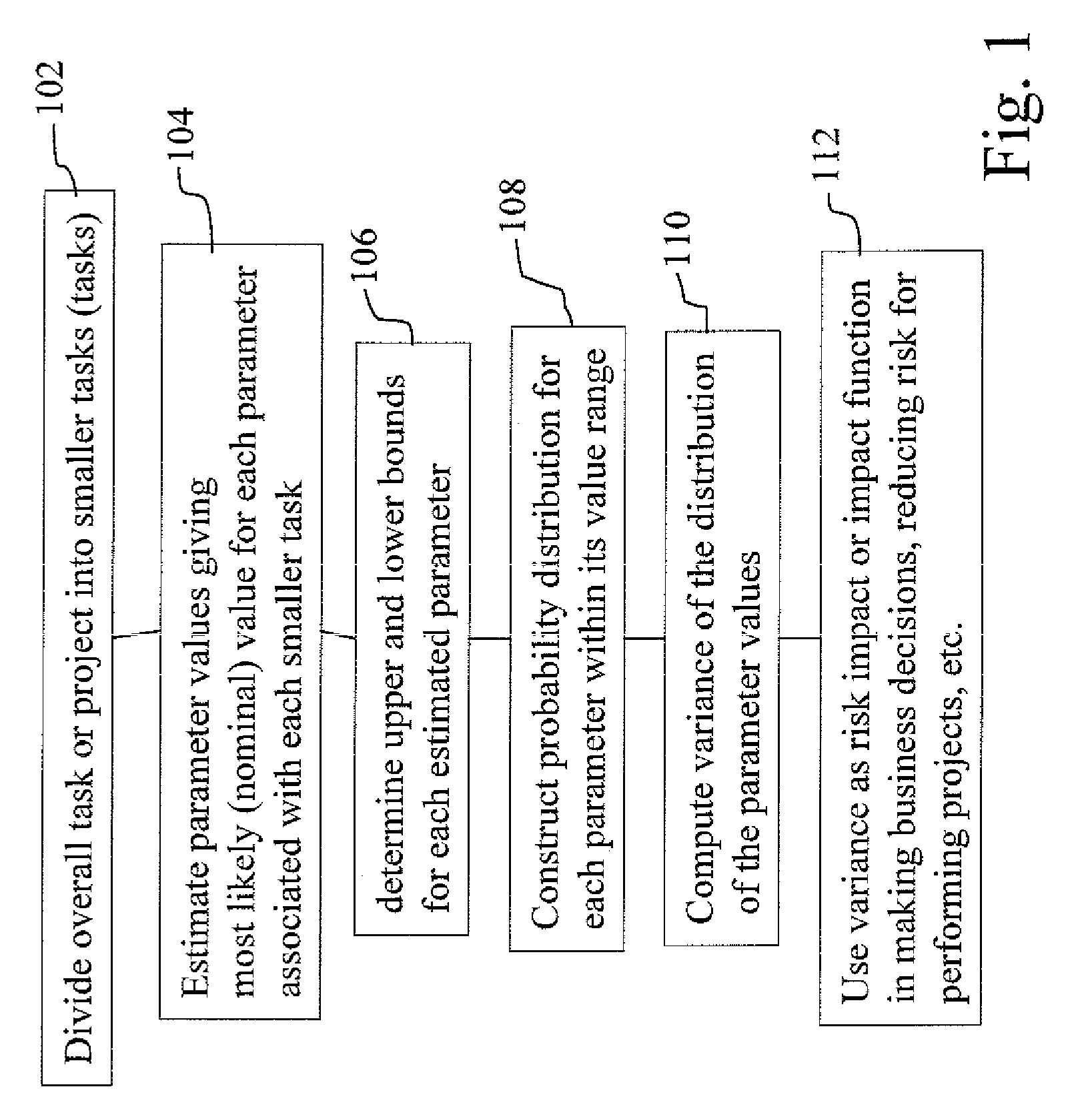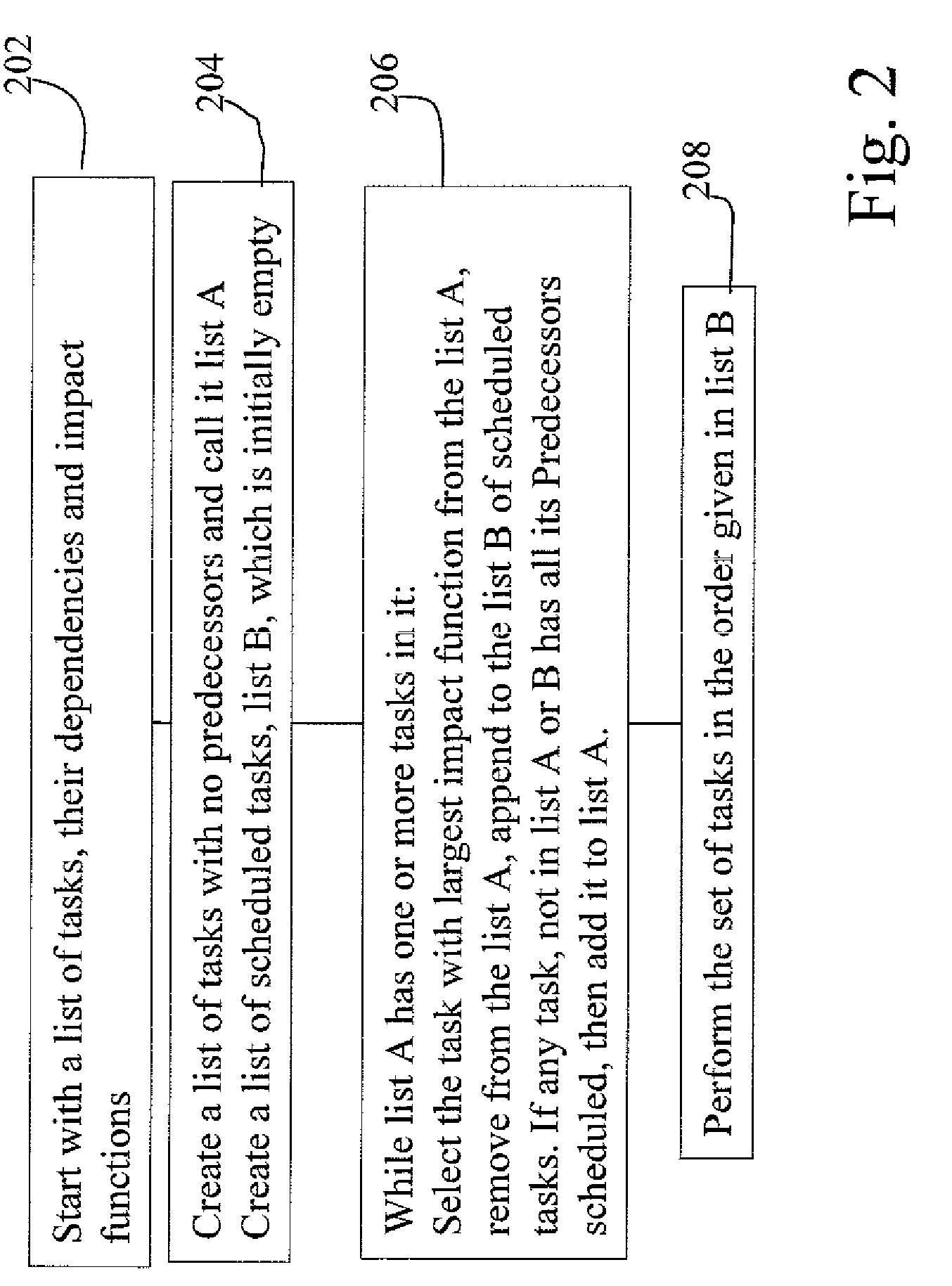Risk reduction
a risk reduction and variance technology, applied in the field of variance management, can solve the problems of high risk of development projects that seek to be innovative, difficult to estimate the cost and feasibility of developing such projects to sufficient accuracy, and insufficient risk of innovation, so as to reduce the risk associated with and reduce the risk of overall projects
- Summary
- Abstract
- Description
- Claims
- Application Information
AI Technical Summary
Benefits of technology
Problems solved by technology
Method used
Image
Examples
Embodiment Construction
[0011]A method and system in one embodiment of the present disclosure seeks to reduce the risk that the project does not perform in accordance with the prediction of some parameter such as the cost or schedule. To reduce the risk, the method and system of the present disclosure determines a measure of the impact of each task on the likelihood of failure for the overall project. This measure is referred to as the impact function of the task.
[0012]An example impact function can be constructed as illustrated in FIG. 1. At 102, overall task such as a project can be divided into one or more subtasks or smaller tasks, also referred to as tasks. At 104, for each of the tasks that makes up an entire or overall task, most likely value for one or more parameters are estimated. An example of a parameter is the amount of effort (e.g., number of person-days of work) required to complete the task. At 106, upper and lower bounds for each estimated parameter are also determined. For example, this m...
PUM
 Login to View More
Login to View More Abstract
Description
Claims
Application Information
 Login to View More
Login to View More - R&D
- Intellectual Property
- Life Sciences
- Materials
- Tech Scout
- Unparalleled Data Quality
- Higher Quality Content
- 60% Fewer Hallucinations
Browse by: Latest US Patents, China's latest patents, Technical Efficacy Thesaurus, Application Domain, Technology Topic, Popular Technical Reports.
© 2025 PatSnap. All rights reserved.Legal|Privacy policy|Modern Slavery Act Transparency Statement|Sitemap|About US| Contact US: help@patsnap.com



